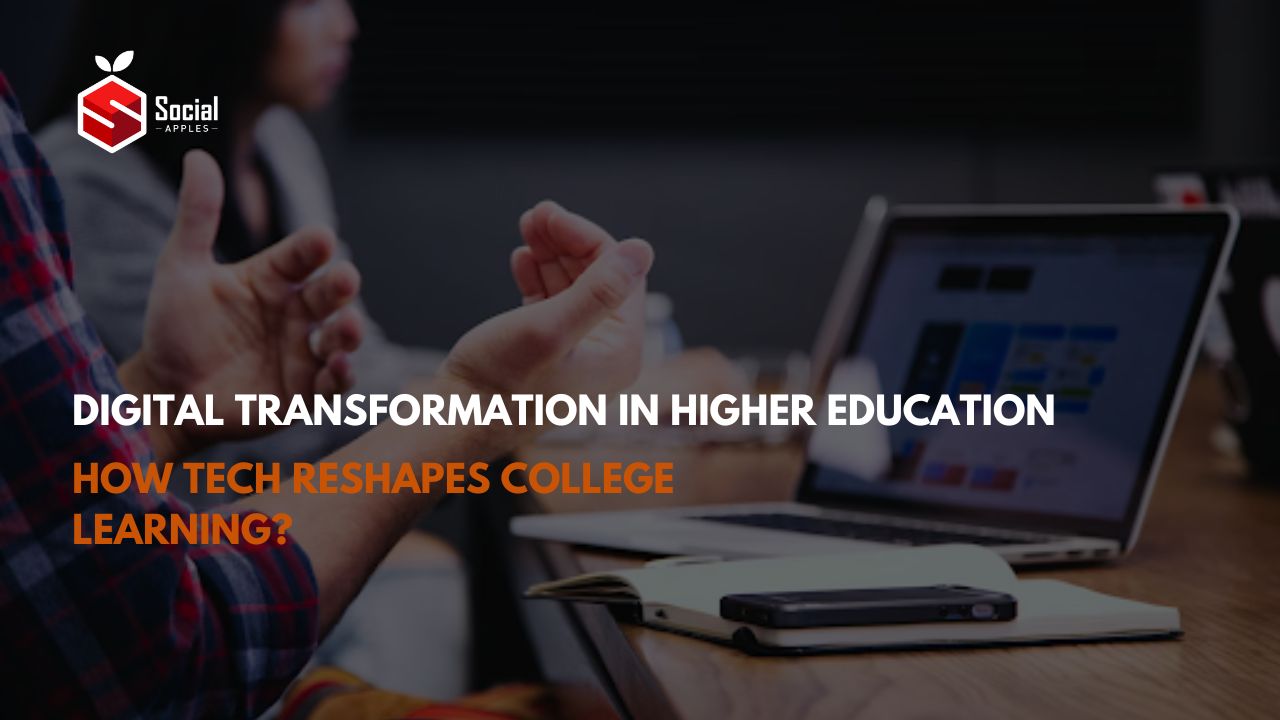In the 21st century, the landscape of higher education is being reshaped by the pervasive influence of digital technology. Integrating digital tools and platforms into traditional academic settings has given rise to a phenomenon known as digital transformation. This transformation is not merely about incorporating technology into classrooms; it represents a fundamental shift in how education is conceived, delivered, and experienced. From online learning platforms to virtual classrooms, digital transformation redefines the educational journey for students and educators.

Contents
The Rise of Online Learning Platforms
Tech has revolutionized education in the last decade or so. Students can get help for all their academic needs, including the cheapest research papers online. Central to the digital transformation in higher education is the widespread adoption of online learning platforms. These platforms offer diverse courses, often called Massive Open Online Courses (MOOCs), covering subjects from arts to sciences. Learners can access these courses from anywhere in the world, providing unprecedented flexibility and accessibility. This democratization of education breaks down geographical barriers, allowing individuals to pursue learning at their own pace.
Virtual Classrooms and Collaborative Tools
The traditional classroom setup is evolving into virtual spaces where students and educators can interact seamlessly. Video conferencing tools and virtual classrooms enable real-time communication, fostering collaborative learning experiences. These platforms facilitate group projects, discussions, and even virtual field trips, providing students with a more immersive and engaging educational environment.
Adaptive Learning Technologies
Adaptive learning technologies leverage data analytics to personalize the learning experience for each student. By tracking individual progress, these tools adjust the content and pace of instruction to match the student’s needs. To learn about another great feature of digital education, you can check this to get help with your essay writing assignments. This personalized approach not only enhances comprehension but also addresses each student’s diverse learning styles and strengths, promoting a more effective learning process.
Artificial Intelligence (AI) in Education
Artificial Intelligence is playing a transformative role in higher education. AI algorithms are employed for tasks such as automated grading and providing instant feedback to students. Intelligent tutoring systems use AI to tailor lessons to individual needs, offering additional support where necessary. Chatbots assist students with inquiries, and predictive analytics help institutions identify students who may be at risk, enabling timely intervention.
Gamification for Engagement
Recognizing the inherent appeal of games, educators are incorporating gamification elements into learning platforms. Gamified approaches use game mechanics, such as point systems, badges, and rewards, to enhance student engagement. This makes learning more enjoyable and instils a sense of accomplishment and motivation among digital-native students.
Digital Credentials and Blockchain Technology
Traditional paper-based credentials are giving way to digital certificates and badges. Blockchain technology ensures the security and authenticity of these digital credentials, reducing the risk of credential fraud. Technology in education simplifies the verification process for employers and educational institutions, streamlining the recognition of qualifications globally.
Augmented and Virtual Reality in Education
Augmented Reality (AR) and Virtual Reality (VR) create immersive learning experiences. VR, in particular, allows students to explore virtual environments related to their field. Medical students can simulate surgeries, history students can visit ancient civilizations, and engineering students can interact with complex structures. These technologies add a new dimension to education, making abstract concepts tangible.
Data-Driven Decision-Making
Data collection and analysis inform strategic decisions in higher education institutions. From monitoring student performance to assessing the effectiveness of teaching methods, data-driven insights guide administrators in optimizing educational processes. Institutions can identify areas for improvement, enhance student support services, and make informed decisions that contribute to overall educational quality.
Mobile Learning and Accessibility
The ubiquity of smartphones has facilitated the rise of mobile learning. Educational apps and mobile-friendly course content allow students to learn independently, accommodating diverse schedules and learning preferences. Mobile technology enhances accessibility, ensuring that education is not confined to specific times or locations.
Final Thoughts
Digital transformation in higher education is an evolutionary journey that transcends the mere adoption of technology; it represents a fundamental shift in how knowledge is created, shared, and accessed. Integrating digital tools and technologies is not without its challenges, including concerns about equity, privacy, and the need for adequate training for educators. However, the benefits, including increased accessibility, personalized learning experiences, and the preparation of students for a technology-driven workforce, are driving this transformation forward.













